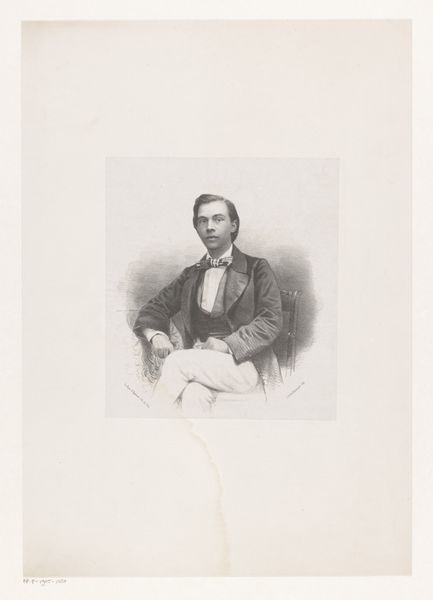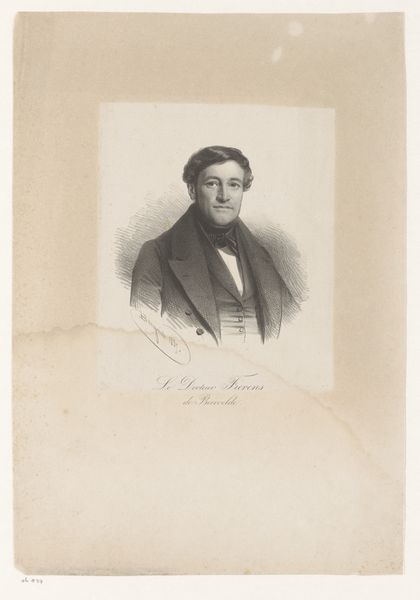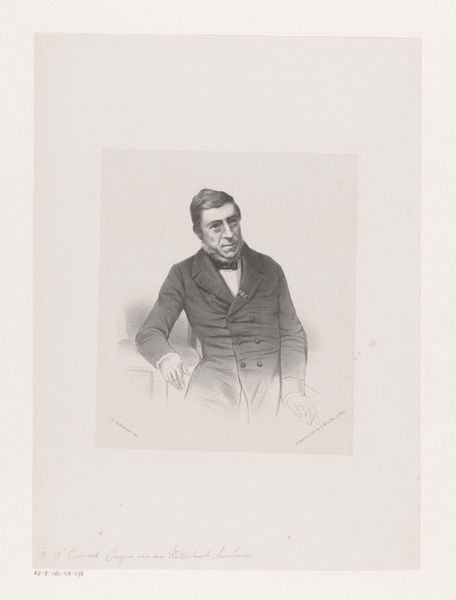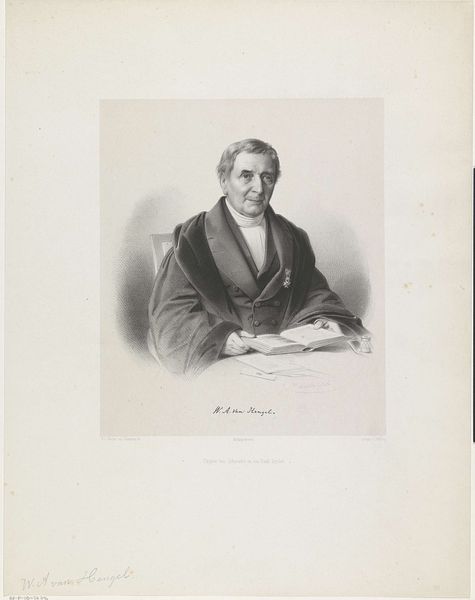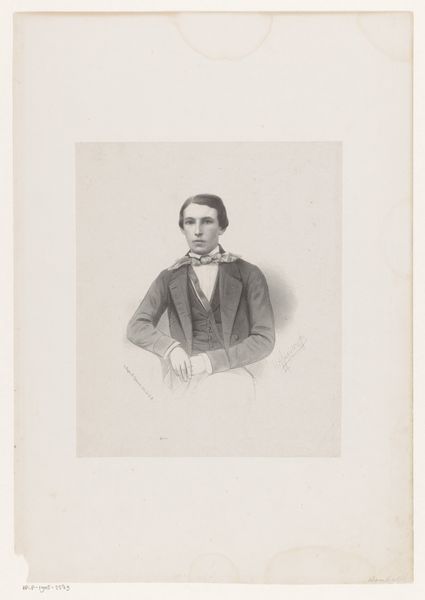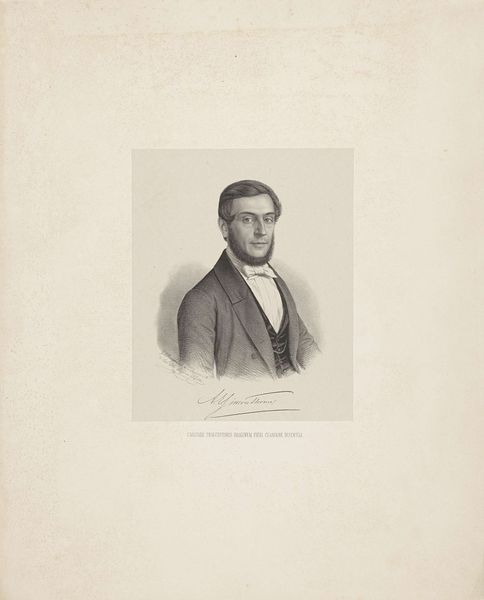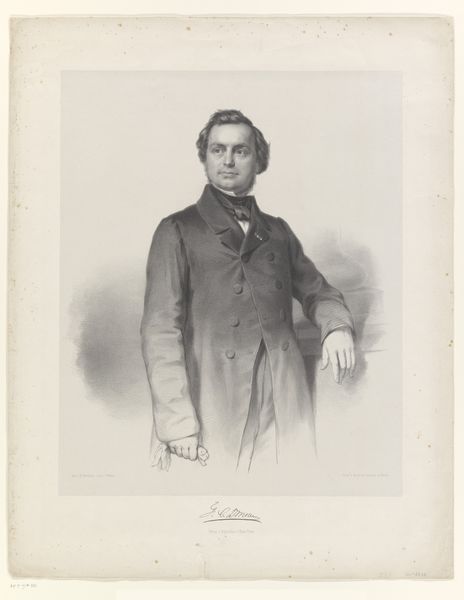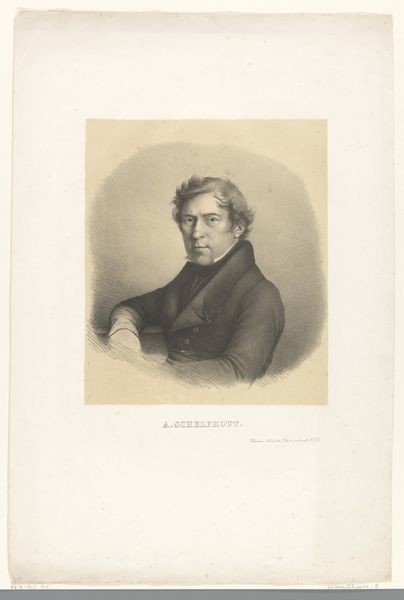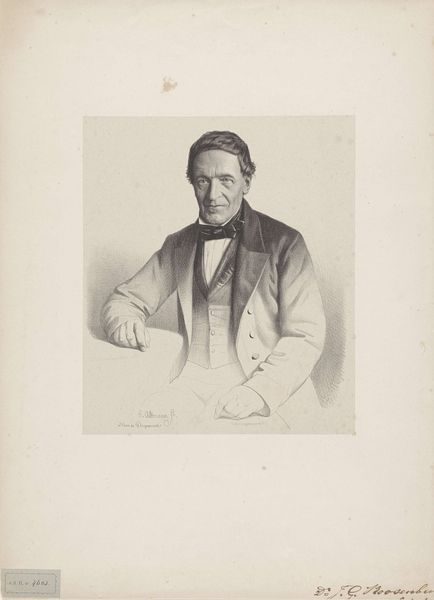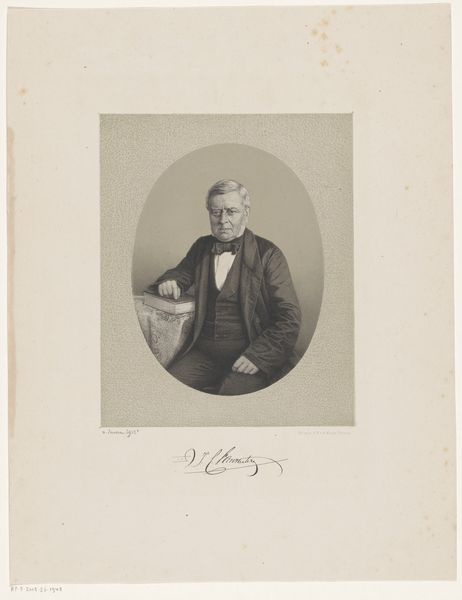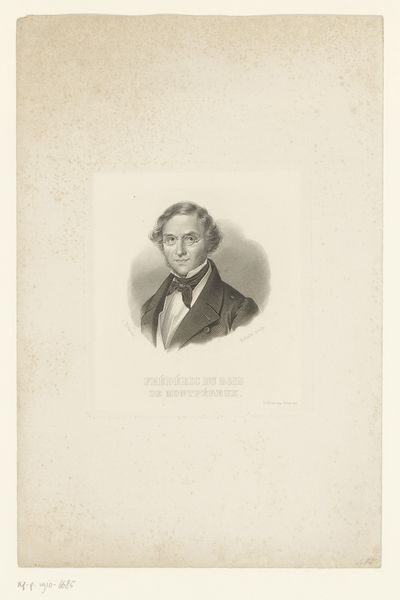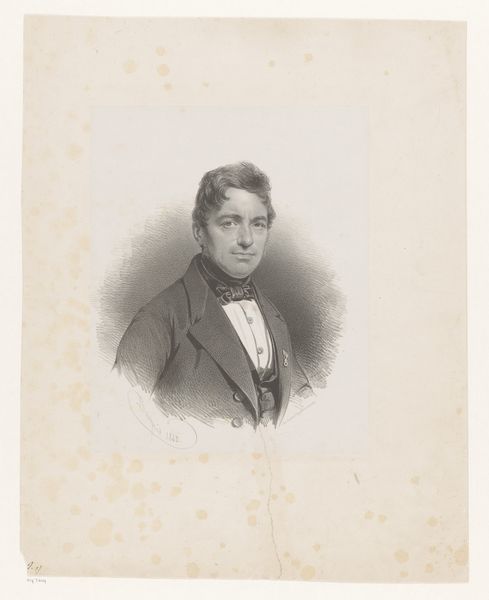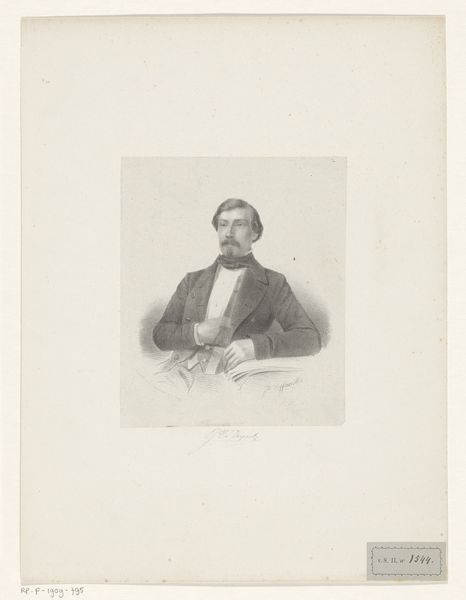
drawing, print, engraving
#
portrait
#
drawing
#
16_19th-century
# print
#
pencil drawing
#
portrait drawing
#
academic-art
#
engraving
#
realism
Dimensions: height 213 mm, width 172 mm
Copyright: Rijks Museum: Open Domain
This is Johann Peter Berghaus's portrait of Johannes Petrus Hasebroek, rendered in the graphic medium of lithography. Lithography’s distinctive quality lies in its reliance on the mutual repulsion of grease and water. The artist would have drawn the image on a flat stone surface with a greasy crayon, then treated the stone so that ink adhered only to the drawn areas. This printmaking technique, which emerged in the late 18th century, allowed for relatively quick and inexpensive reproduction. Berghaus has used it here to capture Hasebroek's likeness with impressive detail, from the texture of his clothing to the subtle gradations of light and shadow on his face. But the real story is in the mechanics of distribution. Lithography democratized image-making, making portraits like this accessible to a wider audience, thus influencing social perceptions of identity and status in the industrial age. It also provided work for many, often anonymous, hands. By considering the materials and processes of its making, we can see this portrait not just as a representation of an individual, but also as a product of its time, enmeshed in the social and economic forces of 19th-century Europe.
Comments
No comments
Be the first to comment and join the conversation on the ultimate creative platform.
